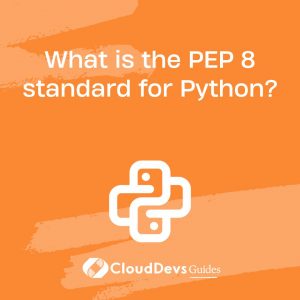What is the PEP 8 standard for Python?
PEP 8, often simply referred to as “PEP 8”, stands for Python Enhancement Proposal #8. It’s a coding convention, a set of recommendations on how to write Python code more readable and consistent. Adopting these standards makes the code understood and maintained by a larger group of developers, a vital aspect for collaborative projects. Here’s a brief overview:
- Formatting:
– Use 4 spaces per indentation level, and don’t use tabs.
– Limit all lines to a maximum of 79 characters for code, and 72 for comments.
– Use blank lines to separate functions, classes, and blocks of code inside functions.
- Naming Conventions:
– Use `lowercase_with_underscores` for function and variable names.
– Use `CamelCase` for class names and `UPPERCASE_WITH_UNDERSCORES` for constants.
- Expressions and Statements:
– Avoid using extraneous whitespace in the following situations: `{a: 1}` is preferred over `{ a: 1 }`.
– Always use `def` instead of assigning a lambda expression to a variable.
– Check for empty values by using `if not some_list` and `if some_list` rather than comparing lengths.
- Imports:
– Always put imports at the top of the file.
– Imports should be grouped in the following order: standard library imports, related third-party imports, local application/library specific imports.
– Each group should be separated by a blank line.
- Comments:
– Comments should be complete sentences and should be used sparingly, i.e., only when necessary to explain complex pieces of code, decisions that could seem non-obvious to other developers, etc.
It’s worth noting that PEP 8 is just a guideline, not a strict rulebook. While it’s widely adopted in the Python community, there might be situations where deviating from PEP 8 is justified. Nevertheless, understanding and generally adhering to PEP 8 is considered a mark of a professional Python developer. For full details, one should refer to the official PEP 8 document.







